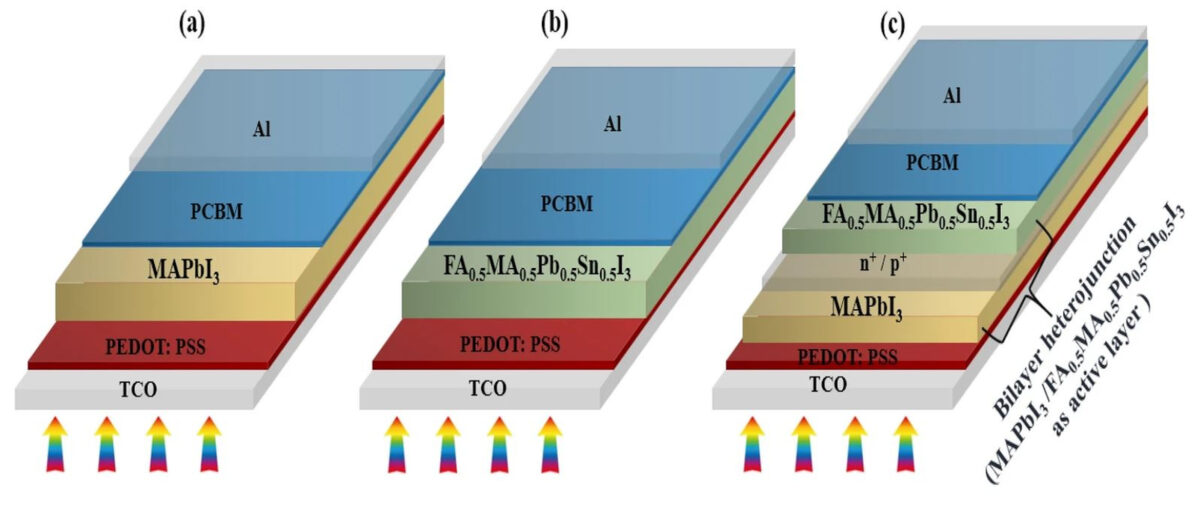An international research team has developed a novel design for inverted all-perovskite bilayer solar cells. The design incorporates bilayer heterojunctions with different perovskite materials, allowing for enhanced absorption across multiple regions of the light spectrum.
They used a top absorber based on a type of lead-halide perovskite known as methylammonium lead iodide (MAPbI3) and a bottom absorber made of a perovskite material known as FA0.5MA0.5Pb0.5Sn0.5I3. The two absorbers have energy bandgaps of 1.55 eV and 1.25 eV, respectively.
The researchers also used SCAPS-1D solar cell capacitance software, which is a simulation tool for thin-film solar cells that was developed by the University of Ghent in Belgium, to simulate several cell designs.
“By varying the parameters of the absorber layers and work-function of the contacts we show improved performance for the proposed device,” the researchers said. “In addition, it is illustrated the temperature of the cell plays a significant role in the functionality of this bilayer cell.”
They said the thickness of the two layers has a significant effect on the performance of the bilayer cell and the thickness of the wide bandgap absorber layer should be thinner than the narrow bandgap.
“The best thickness for MAPbI3 and FA0.5MA0.5Pb0.5Sn0.5I3 is 100 nm and 600 nm, respectively,” they said.
The scientists designed the solar cell with a substrate made of fluorine-doped tin oxide (FTO), a hole-transporting material (HTM) based on PEDOT:PSS, the two absorbers, an electron acceptor made of phenyl-C61-butyric acid methyl ester (PCBM), and a metal contact made of aluminum (Al).
Through a series of simulations conducted under standard illumination conditions, the research group found that the cell could achieve a power conversion efficiency of 24.83%, an open-circuit voltage of 0.9 V, a short-circuit current density of 34.76 mA/cm2, and a fill factor of 79.4%.
The scientists introduced the new cell technology in “Performance analyses of highly efficient inverted all-perovskite bilayer solar cell,” which was recently published in Scientific Reports. The research group includes academics from the University of Tabriz in Iran and the Bilkent University in Turkey.
This content is protected by copyright and may not be reused. If you want to cooperate with us and would like to reuse some of our content, please contact: editors@pv-magazine.com.




By submitting this form you agree to pv magazine using your data for the purposes of publishing your comment.
Your personal data will only be disclosed or otherwise transmitted to third parties for the purposes of spam filtering or if this is necessary for technical maintenance of the website. Any other transfer to third parties will not take place unless this is justified on the basis of applicable data protection regulations or if pv magazine is legally obliged to do so.
You may revoke this consent at any time with effect for the future, in which case your personal data will be deleted immediately. Otherwise, your data will be deleted if pv magazine has processed your request or the purpose of data storage is fulfilled.
Further information on data privacy can be found in our Data Protection Policy.